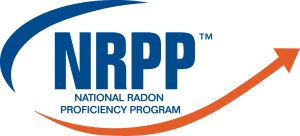
Comprehensive Commercial Radon Mitigation
Cardinalbama stands out for our comprehensive commercial radon mitigation services, designed to protect your employees, tenants, and clients. Our team is certified by top industry bodies and delivers tailored, effective solutions:
Our expert radon mitigation services for commercial properties include:
- Design and installation for apartments, schools, and offices
- Radon-Resistant New Construction systems
- Retrofit and Active Soil Depressurization Systems
- ANSI, ASTM, and ACI compliance
- Full project management from start to finish
- Over 30 years of industry experience
Advanced Radon Mitigation Strategies
Our solutions for commercial radon mitigation go beyond standard practices to deliver maximum protection and assurance.
With our comprehensive radon mitigation services, commercial properties benefit from:
- Professional vapor barrier installation for moisture control
- Certified NRPP and HUD compliance
- Custom radon system designs for complex structures
- Active system monitoring for ongoing safety
- Integration with existing building infrastructure
- High-quality materials that meet industry standards

OUR RADON MITIGATION EXPERTISE
Our Process
Discover our structured approach to commercial radon mitigation, ensuring safety and compliance at every step of the project.
Consultation
Begin with an in-depth consultation to understand site specifics and client needs.
Design
Develop a custom radon mitigation plan tailored to your building’s architecture.
Installation
Implement the mitigation system with precision, adhering to all regulatory standards.
Follow-Up
Conduct post-installation testing and provide ongoing support to ensure effectiveness.
Who We Serve
Our comprehensive commercial radon services are tailored to meet the unique needs of diverse industries, ensuring safety and compliance in every environment.
Property managers
We help properties including Apartment complexes, Medical facilities, Warehouse, Municipal buildings and more.
General contractors
Enhance property value and safety from the ground up on new construction properties for future occupants.
Multifamily
housing
Incorporate radon-resistant features in multi-family housing for future-proof health and safety of occupants.
Frequently Asked Questions About Commercial Radon Mitigation
Here are our most frequently asked questions about commercial radon mitigation. Feel free to reach out if you have any additional questions.
Our Proven Success in Radon Mitigation
Our commitment to excellence results in industry-leading radon mitigation services, underscored by our unmatched success rates and client satisfaction.
Success Rate
We’ve achieved a perfect track record, with every project bringing radon levels to below the standard limits.
Radon Levels
Our solutions ensure radon levels stay below this measured benchmark for complete safety.
Years of Expertise
With over 30 years of professional experience, Cardinalbama is trusted for our expert radon mitigation services across the region.
Our Certifications
Cardinalbama is proudly certified by the industry’s leading organizations, reflecting our commitment to quality, safety, and professionalism. Our credentials ensure that we meet the highest standards for radon mitigation and testing services.





Resources About Radon Mitigation
Explore our collection of expert guides, articles, and resources designed to provide insightful information on radon mitigation and safety for commercial properties.
"*" indicates required fields
Explore Our Radon Mitigation Solutions
At Cardinalbama, we offer tailored radon mitigation services for commercial properties. Our team is committed to ensuring safety and compliance with customized plans that meet your specific needs.


















